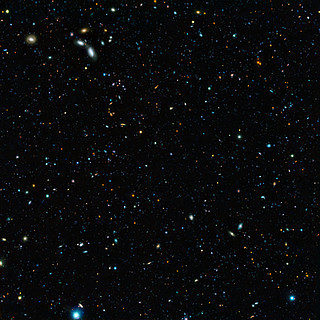eso1013 - 24 March 2010
Astronomers have long known that in many surveys of the very distant Universe, a large fraction of the total intrinsic light was not being observed. Now, thanks to an extremely deep survey using two of the four giant 8.2-metre telescopes that make up ESO’s Very Large Telescope (VLT) and a unique custom-built filter, astronomers have determined that a large fraction of galaxies whose light took 10 billion years to reach us have gone undiscovered. The survey also helped uncover some of the faintest galaxies ever found at this early stage of the Universe.
Astronomers frequently use the strong, characteristic “fingerprint” of light emitted by hydrogen known as the Lyman-alpha line, to probe the amount of stars formed in the very distant Universe [1]. Yet there have long been suspicions that many distant galaxies go unnoticed in these surveys. A new VLT survey demonstrates for the first time that this is exactly what is happening. Most of the Lyman-alpha light is trapped within the galaxy that emits it, and 90% of galaxies do not show up in Lyman-alpha surveys.

This composite image of the GOODS-South field — the result of an extremely deep survey using two of the four giant 8.2-metre telescopes composing ESO’s Very Large Telescope (VLT) and a unique custom-built filter — shows some of the faintest galaxies ever seen. It also allows astronomers to determine that 90% of galaxies whose light took 10 billion years to reach us have gone undiscovered.
The image is based on data acquired with the FORS and HAWK-I instruments on the VLT. It shows in particular two varieties of light emitted by excited hydrogen atoms, known as Lyman-alpha and H-alpha.
(ESO/M. Hayes)